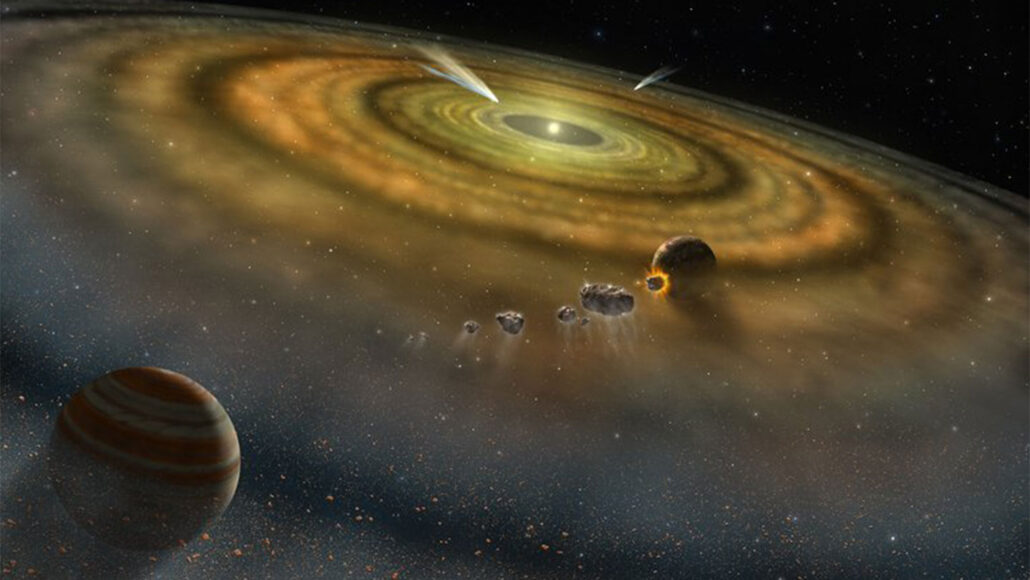Un gigante pianeta 'destabilizzazione' potrebbe essere coinciso con la nascita della luna della Terra.

That 60-million- to 100-million-year window makes the instability a prime suspect in the diversion of a hypothesized planet that hit Earth, creating the moon (SN: 3/15/23). The timing “seems right,” says Matthew Clement, an astrophysicist at the Johns Hopkins Applied Physics Laboratory in Laurel, Md. “Lots of things were happening in the solar system’s early history. However, dynamically speaking, we don’t have a whole lot of reason to believe that things changed much after the moon-forming impact.”
But he cautions that Morbidelli’s estimate is based on “one data point, of the breakup of one asteroid, pieces of which serendipitously happened to get to Earth.”
Still, “it’s nice that [the new result] is actually based on some real data, even if it’s indirectly, rather than just computer models,” says planetary scientist John Chambers. He has questions, though. “They suggest this happened when the formation of the terrestrial planets was more or less complete, apart maybe from the giant impact that formed the moon,” says Chambers, of the Carnegie Institution for Science in Washington, D.C. “But then there’s a good chance it would have messed up the orbits of the terrestrial planets and possibly led to some of them colliding,” which the current lineup of planets suggests did not happen.
Both Chambers and Matthews have worked on scenarios in which the orbital instability occurred even earlier, just a few million years after the solar system began. That earlier time for the instability would help explain one of the outstanding riddles of the solar system: the relatively small size of Mars compared with Earth and Venus. That’s because the instability would have removed many objects from near the orbit of Mars before it could grow to the size of Earth or larger. The new result from Morbidelli’s team seems to exclude that solution.
“I’m prepared to rely on the evidence,” Chambers says. But he isn’t convinced yet because many facets of the solar system’s present structure must be reconciled with any date for the giant planet instability.
Clement agrees. “There’s problems if the instability happened at 500 million years. There’s still problems that we have to resolve if it happened when they say it happened,” he says. “And there’s still problems if it happened immediately after the planets formed, in the first few million years. This story is not done being told yet.”
This article was supported by readers like you. Invest in quality science journalism by donating today.




